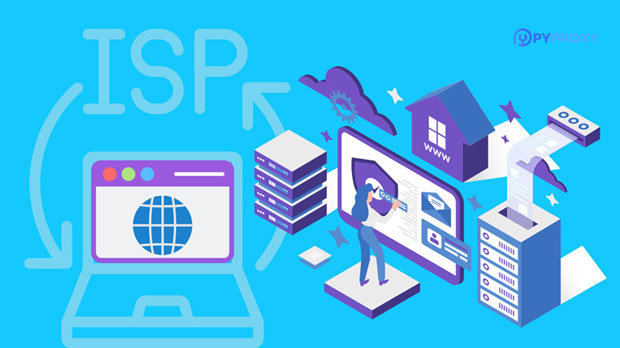Is it safe to use the free Michigan SOCKS5 proxy?
With the growing development of the Internet, proxy server has become an important tool for users to protect privacy, accelerate access and bypass geographical restrictions. Among them, socks5 proxy is widely used in various network activities due to its efficiency, security, and flexibility. However, many people have chosen the free socks5 proxy service, some of which offer Michigan IP addresses, claiming to provide users with anonymous browsing and network acceleration features. But the question is, are free socks5 proxies truly secure? This not only concerns the privacy protection of online activities, but also involves potential security risks and hidden dangers. We will conduct an in-depth analysis of the security of the free Michigan SOCKS5 proxy, exploring it from multiple perspectives such as technical aspects, usage scenarios, and potential risks to help users make more informed choicesSOCKS5 Proxy Fundamentals Overview Before delving into the security of free Michigan SOCKS5 proxies, we first need to understand what SOCKS5 proxies are and their basic working principles. SOCKS5 is an abbreviation for "Socket Secure version 5" and is a proxy protocol commonly used for network communication. Different from traditional HTTP proxy and HTTPS proxy, SOCKS5 proxy not only supports HTTP traffic, but also can handle any type of Internet traffic, including FTP, SMTP, etc., which makes it more flexible and versatileThe advantage of SOCKS5 proxy lies in its support for multiple authentication methods, which can effectively prevent unauthorized access while providing stronger anonymity. Compared to previous versions, SOCKS5 has made significant improvements in security, flexibility, and speed. It allows users to communicate with the target website through a proxy server, thereby hiding their real IP address and protecting their privacyThe Attraction and Challenges of Free SOCKS5 ProxyFree SOCKS5 proxy is widely popular among users because it does not require any fees. Especially when anonymous browsing, bypassing geographical restrictions, or accessing blocked websites are required, free proxies provide a convenient option. For example, some users may wish to access content through an IP address in the United States and choose a free SOCKS5 proxy that provides a Michigan IP address. These proxy servers often meet users' short-term usage needs and do not require paymentHowever, free proxy services do not mean they are completely risk-free. In many cases, free proxy services have many hidden dangers and challenges. Firstly, free services often rely on advertising revenue or other profit models, which may pose a threat to users' privacy and security. Secondly, there may be significant differences in the quality of free agents, and users' online activities may be monitored or recorded. More importantly, many free SOCKS5 proxies are unstable, which may lead to connection loss, increased latency, and even direct malicious attacksPotential Security Risks of Free SOCKS5 Proxy1. Data leakage and privacy issuesOne major risk of free SOCKS5 proxy is data leakage. Although SOCKS5 itself supports encrypted transmission, not all proxy services can ensure encryption during the transmission process. Some free proxy service providers may not encrypt user data, exposing sensitive information such as login credentials, browsing history, etc. to third parties. In addition, some free proxy providers may intentionally record and store user activity data for advertising or other purposes. This means that users' privacy will be leaked without their knowledge2. Malicious software and virus risksThere is a risk of encountering malicious software and virus attacks when using free proxy services. Some free socks5 proxy servers may be used by criminals to spread malicious software or directly become a springboard for cyber attacks. Due to the insufficient security measures of these proxy servers, once connected to them, users' devices may be infected and even become part of a botnet. In addition, some free proxy servers may tamper with or inject malicious code into users' network traffic, causing serious security risks3. Man in the Middle Attack (MITM)Man in the Middle (MITM) attack is another significant risk. Although the SOCKS5 protocol can encrypt communication, if the proxy server itself is controlled by attackers, hackers can intercept, tamper with, or even forge users' network requests and responses. Due to the lack of strong security measures in many free SOCKS5 proxies, once controlled by hackers, all user network activities may be completely exposed to attackers, leading to serious consequences such as identity theft and financial losses4. Speed and stability issuesCompared to paid proxy services, free SOCKS5 proxies often have significant issues with speed and stability. Free proxy servers often have high user loads, limited bandwidth, resulting in slow access speeds and unstable connections. Long term use of free agents may lead to frequent disconnections, increased latency, and affect user experience. In addition, these proxy servers may also experience access difficulties or complete disconnection during peak hours, further affecting network security and users' normal useHow to evaluate the security of a free SOCKS5 proxyAlthough there are many potential security issues with free SOCKS5 proxies, there are still some ways to help users reduce risks when using these proxy services. Here are some key elements for evaluating and using a free SOCKS5 proxy:1. Choose a trustworthy service providerFirstly, users should choose free proxy service providers with a certain reputation in the industry. Its reliability can be determined by reviewing online reviews, community discussions, and service providers' privacy policies. Reputable proxy providers usually clearly declare their privacy protection measures and take certain technical measures to ensure data security2. Using encryption protocolsEven free SOCKS5 proxies should prioritize services that support encryption protocols. Encryption can effectively prevent data from being stolen or tampered with during transmission. Therefore, ensuring that proxy services provide encryption functionality (such as supporting SSL/TLS encryption) is a fundamental prerequisite for ensuring security3. Regularly check network traffic and data securityIt is also necessary to regularly check your network traffic and data security when using proxy services. You can use some network monitoring tools to check for abnormal traffic or potential security threats. Meanwhile, privacy protection during internet browsing can be enhanced through secure browser plugins4. Avoid accessing sensitive informationIf it is necessary to use a free SOCKS5 proxy, it is recommended to avoid accessing sensitive information such as online banking, e-commerce platforms, etc. while connecting to a proxy server. The anonymity of proxy usage does not fully guarantee the security of network activities, especially in the risk of network attacks and data breaches. Protecting account information is particularly importantSecurity advantages of paid SOCKS5 proxyFor users who have high security requirements, a paid SOCKS5 proxy is undoubtedly a better choice. Paid proxies typically offer stronger encryption capabilities, more stable connections, and higher privacy protection. Paid service providers generally adopt strict no log policies for users' online activities to ensure that their browsing history is not recorded or soldPaid SOCKS5 proxies usually have stronger defense capabilities, which can prevent the risks of hacker attacks and man in the middle attacks. In addition, many paid proxy service providers also provide technical support to solve various problems that users may encounter during use, further enhancing the user experienceConclusion: Security Analysis of Free Michigan SOCKS5 ProxyIn summary, there are certain security risks associated with using the free Michigan SOCKS5 proxy. Although it provides users with convenient anonymous browsing and the ability to bypass geographical restrictions, it also comes with potential threats such as data breaches, malware, and man in the middle attacks. Therefore, when choosing a free proxy service, users need to carefully evaluate its security and avoid sensitive operations on unverified proxy serversIf high security requirements are required, it is recommended to choose paid SOCKS5 proxy services, which have stronger guarantees in protecting user privacy and ensuring data security. Whether choosing a free or paid proxy, ensuring the reliability and security of proxy services is always the primary consideration for users when using proxies
2025-01-06

























































